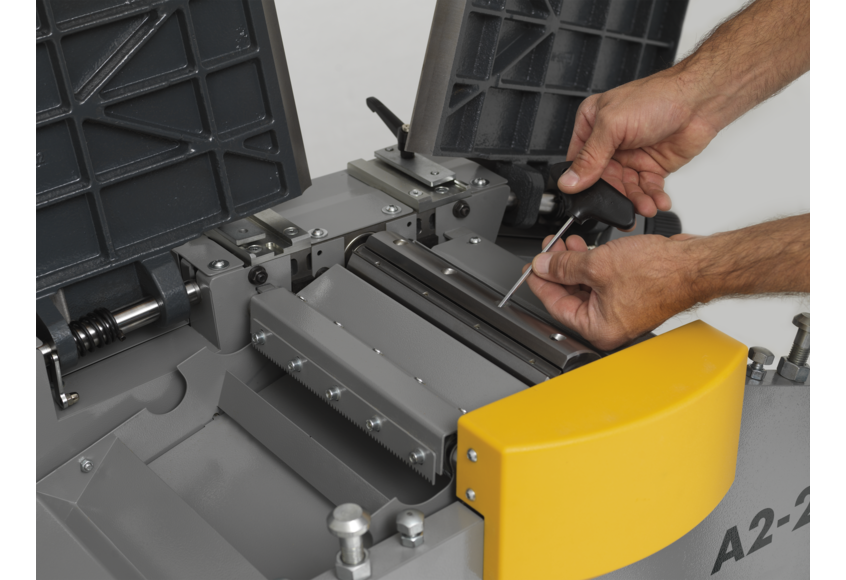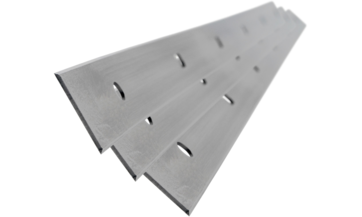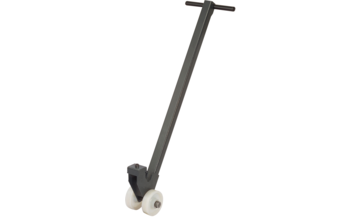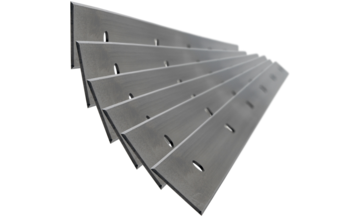Afretter-tykkelseshøvl Hammer A2-26
- Afretter-høvlebredde: 260 mm
- Afretterbord længde 1045 mm
- Høvleaksel: selvindstillelig høvlekutter
- Maks. spånaftag: 3 mm
- Tykkelseshøjde 3–184 mm
- Fremtrækhastighed 4,5 m/min
ekskl. moms. , uden fragtomkostninger
inkl. 25% afgifter , uden fragtomkostninger
Beskrivelse
A2 – den NYE "lille" afretter/tykkelseshøvl for kvalitet og præcision i små værksteder
Den har ikke blot passende mål til små værksteder, men den nye A2-26 overbeviser også med Hammer-høvl-standarder, der har været værdsat i årtier.
Massive tykkelsesborde af støbejern, den enkle betjening og den nemme omstilling fra afrette- til tykkelseshøvling, men især den velrenommerede Hammer system-høvlekutter med de selvindstillelige høvleknive for perfekt høvlede træoverflader er imponerende detaljer, som du ikke bør undvære i dit værksted.
Detaljer
Hammers 3-kniv-automatisk høvlekutter garanterer fantastisk høvlede træoverflader og enkel betjeningskomfort. Siden 1987 har det tusinde gange roste høvlekutter-vendeknivsystem sparet vore kunder over hele verden for unødvendig ekstra investering i almindelige strimmelhøvleknivaksler. Høvlekutter-vendeknivsystem kan du kun få sammen med høvle fra huset Felder!

Hammer afretter- og tykkelseshøvl-bord er med ribber og fremstillet af massivt støbejern og sørger for fantastisk præcision. Afretter-høvlebord bredden svarer hhv. til høvlebredden, således bliver emner ved afrettearbejde ført sikker over hele afretterhøvlebord-længden.

Spånaftaget indstilles over en drejeknop på maskinens bagside! Det garanterer brugeren en hurtig og præcis indstilling af spånaftaget ved maksimal betjeningskomfort. Det maksimale spånaftag er 3 mm.

Kip af afretteranslaget fra 90 og 45 sker helt enkelt ved at løse de 2 fingerbolte. Desuden har brugeren stort udbytte af den store skala. 2 ende-anslag ved 90 og 45 giver præcision, tidsbesparelse og betjeningskomfort.

Pladsbesparende og ergonomisk design: Afretterbordene opklappes bagud og sørger ikke kun for pladsbesparende placering af din Hammer høvl, men sikrer også en ergonomisk korrekt arbejdsgang ved tykkelseshøvlen.

Den luftteknisk optimerede spånsugehætte søger for ideel spånaftag og rene arbejdsborde, takket være de rummelige spånbeholder.

Den maksimale tykkelseshøjde er 184. Aflæsningen af tykkelseshøjden sker på en stor skala på maskinestanderen. En endnu mere præcis indstilling med 1/10 mm præcision af tykkelseshøjden sker efter ønske med systemhåndhjul og integreret digitalur.

Tekniske specifikationer
| Afretterbord-længde [mm] | 1045 |
| Frekvens [Hz] | 50 |
| Spånaftag maks. [mm] | 3 |
| Spænding [V] | 1x 230 |
| Ydelse (hk) | 2,6 |
| Ydelse [kW] | 1,9 |
Passende varer
HS-M42 systemhøvlekniv
500-07-011 | til Felder / Hammer | Længde 260 mm
Høvlekniv til FELDER, HAMMER og Format 4 systemhøvlkutter
læs mereekskl. moms. , uden fragtomkostninger
inkl. 25% afgifter , uden fragtomkostninger
Systemhåndhjul af aluminium
12.1.311 | Ø 160 mm
Systemhåndhjul til vinkelindstilling af høj kvalitet på Felder og Hammer maskiner
læs mereekskl. moms. , uden fragtomkostninger
inkl. 25% afgifter , uden fragtomkostninger
Ur med analog visning
01.1.202 | til visning af tykkelseshøjde visning, borehøjde Felder FD 250 | Vist i mm
Ekstremt præcist ur til montage på systemhåndhjul
læs mereekskl. moms. , uden fragtomkostninger
inkl. 25% afgifter , uden fragtomkostninger
Kørestel til Hammer serie 3 | uden løftestang
503-134 | til Hammer A2 26, A3 26, A3 31, A3 41 (fra konstruktionsår 09/2011), B3 basic, B3 winner, B3 perform, K3 basic , K3 winner, K3 perform, F3
Kørestel til behagelig transport af Hammer maskiner
læs mereekskl. moms. , uden fragtomkostninger
inkl. 25% afgifter , uden fragtomkostninger
Løftestang til Hammer maskiner
500-149
Løftestang for hurtig og nem skiftning af Hammer maskiner
læs mereekskl. moms. , uden fragtomkostninger
inkl. 25% afgifter , uden fragtomkostninger
SS systemhøvlekniv
500-07-010 | til Felder Hammer | Længde 260 mm
Høvlekniv til FELDER, HAMMER og Format 4 systemhøvlkutter
læs mereekskl. moms. , uden fragtomkostninger
inkl. 25% afgifter , uden fragtomkostninger
Det kunne måske også interessere dig
Løftestang til Hammer maskiner
500-149
Løftestang for hurtig og nem skiftning af Hammer maskiner
læs mereekskl. moms. , uden fragtomkostninger
inkl. 25% afgifter , uden fragtomkostninger
FAQs
Planers are used to produce flat and smooth wood surfaces. There is a distinction between surface planers and thickness planers or the combination of these two machines, the so-called planer-thicknesser. Before a "rough" board of solid wood or plastic can be cut to the desired thickness, the surface planer is used to produce a flat and smooth surface on one side and a flat and smooth surface at a 90-degree angle to it on the narrow side. Subsequently, the facing, unprocessed surface can be planed to the desired thickness with the thicknesser. The result is an entirely smooth and, above all, dimensionally and angularly accurate workpiece - a guarantee for the success of all subsequent machining or application processes.
The frictional resistance between the machine table and the wood is reduced with special lubricants developed for woodworking. Especially when working with resin-rich solid woods, the use of lubricants in woodworking is inevitable. Liquid lubricants are best suited and their application onto the machine table via a spray bottle is very simple and easy. When using lubricants, it is important to ensure that they are fully volatilised after processing to prevent any negative effects on subsequent surface treatments with stains and lacquers. Here you can find Supergleit - the best choice for planing, but also as a lubricant for circular saw and moulding operations.
The purchase price of a planer depends on several factors - the type of machine, planing width, scope of performance and functions, the degree of automation or other desired features. Well thought out from the start, a perhaps higher purchase price pays off in the long run compared to a purely price-based purchase. Additional costs for high technology and work safety, which are incorporated as key components in planers, maintain their value over the years and even decades. One example: the Silent-Power® spiral cutterblock from Felder with spiral blade technology is many times quieter than other cutterblocks, protecting your ears and increasing work safety. The Silent-Power® spiral cutterblock also uses carbide reversible blades with 4-fold cutting edges - which increases the tool life by up to 20 times compared to HSS or SS cutting materials. The Silent-Power® spiral cutterblock therefore scores across the board and saves you money at the same time. Scroll up for a wide selection of planer/thicknessers in every price and performance range.
In many European countries, regulations require the sole use of clean-air extraction units in commercial establishments. Clean-air dust extractors reduce the dust load in the ambient air to 0.1 mg/m3 residual dust content. Of course, from the point of view of work safety and health, clean-air dust extractors are always a good choice - even beyond legal regulations. When choosing an air filter dust extractor, the dust load of the air in the workshop can also be reduced with so-called cartridge filters. The following applies to both clean-air and air filter dust extractors: The air speed at the machine-side extraction connection must be between 18 m/s and 22 m/s; 28 m/s for the continuous processing of predominantly wet wood. Extraction capacity calculations, which calculate both the cross-section of the necessary pipes or hoses and the required power of the extraction unit or system on the basis of the number of machines and the distance to be extracted, provide one hundred percent certainty for perfect extraction results. Of course, when extracting dust from a planer, the width of the cutterblock and the maximum possible chip removal must also be taken into account. These two values determine the expected volume of chips removed through the dust extraction hose or pipe system via the dust extractor system or unit. If the chip bags or containers are too small, the cycles for emptying them will increase considerably. Here you can discover our large selection of dust extractors and filters.
Stationary planer-thicknessers are used for flush planing and levelling of solid wood. As a first step, the wood is planed. The workpiece is fed to the rotating cutterhead through the infeed surface planer table. The alignment of the infeed planer table is parallel to that of the cutting circle of the cutterblock. This distance between the planer table and the cutting circle is responsible for the chip removal and is usually adjustable; depending on the design, the chip removal can vary by up to several millimetres. After feeding the workpiece to the cutterblock and after chip removal, the workpiece passes over the outfeed planer table. The outfeed planer table and the cutting circle of the cutterblock are in parallel alignment, i.e. the cutterblock and the outfeed planer table are at the same level. The result is an aligned, flat and smooth wood surface. This process is called "planing", the corresponding machine is called "surface planer". The side opposite to the planed wood surface can now be planed to the desired thickness in a second work step. This operation is called "thicknessing" and the machine required for this is the "thicknesser". Thicknessers have a thicknessing table that can be adjusted to size in height. A feed roller, usually grooved or toothed, located in front of the cutterblock ensures that the workpiece is fed safely to the cutterblock. The cutting circle of the cutterblock corresponds to the set thicknessing table position, the chip removal rate possible in each case can be up to several millimetres. Behind the cutterblock is a smooth outfeed roller that gently transports the thickness-planed workpiece away from the cutterblock. Depending on the application, surface planers are used as stand-alone machines or as combined surface and thickness planers. Here you can see the chip flight during planing work in super slow motion.
Generally, the main criteria for buying a planer is the intended area of use, a defined amount of space, ease of use and sustainability in terms of the cost of planer knives. A quick commercial answer is the intended area of use, planing, thicknessing or both in one, with a defined amount of use per day, per month or per year. The higher the expected workload, the higher the quality and stability required of a new planer/thicknesser. In terms of space, the mere machine footprint should not be considered the sole criterion; some planers require additional, valuable floor space due to their design - e.g. for protruding fences behind the machine. In any case, a very good alternative where space is limited are planer-thicknessers. Ease of operation comprises decision criteria such as set-up and changeover times, the latter especially in the case of planer-thicknessers. While the adjustment of planing or thicknessing tables is mainly done manually on smaller planers, electrical adjustment options with LED displays up to programmable positioning and roughing finishing allowances are mostly standard on larger planer-thicknessers. For decades, various manufacturers have been producing flawless, sustainable sets of planing knives using reversible knife technologies. Nevertheless, there are groundbreaking developments that are becoming more and more popular on the market, such as the Silent-Power® sprial cutterblock from Felder that reduces noise by half, equipped with carbide reversible cutting edges and 4 cutting chamfers per cutting edge. The tool life of carbide is 20 times higher than that of HSS or SS cutting materials. The Silent-Power spiral cutterblock therefore scores across the board and saves you money at the same time. You can find a wide selection of high-quality planer/thicknessers for many applications further up on this page.

























